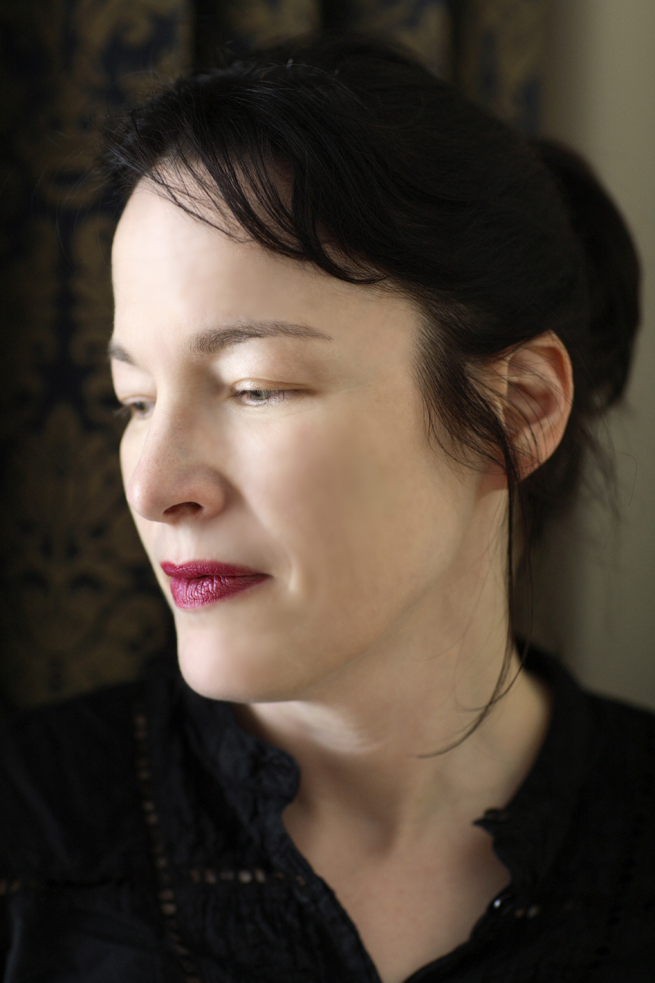Crack open the cover of any of the three books written by Alice Sebold, the keynote speaker of this year’s Kachemak Bay Writers’ Conference, and there’s no turning back. At least not without a backward glance and wondering what you missed. Without question, Sebold has mastered the power of getting readers’ attention from the get-go.
During the conference and for attendees only, Sebold will deliver the keynote address at the conference’s opening dinner at Land’s End Resort’s Quarterdeck, which begins at 7 p.m. June 13, will do a question-and-answer session during the conference luncheon at Land’s End at noon June 15, and will give a talk on writing at 8:30 a.m. June 16.
She also will give a public reading of her work at the Mariner Theatre at 8 p.m. June 14.
Since the age of 11, the California-based author knew being a writer was the direction her life was headed.
“I grew up in a house with people who read books. Books were everywhere, in every room and had a huge effect on me,” she said.
Being surrounded by the written word was one thing. Making sense of it was another for the youngster struggling with undiagnosed dyslexia. With the help of a teacher, Sebold taught herself to play with words like they were objects.
“That way I conquered my reading disorder as well,” she said. “I don’t know if I’d taken to language and writing if I hadn’t had to struggle that way.”
Poetry was Sebold’s starting point, providing a format for arranging those word-shapes concisely and for maximum impact.
“The truth is, a good poem has the weight and significance of a good novel. So there it all was,” she said.
Also there was the key to Sebold’s future as a writer.
“I think certain people feel called to do something,” she said. “They find it and then their brain kind of explodes and nothing else can hold a candle to it. That’s what happened to me.”
After beginning what would eventually become her second book, “The Lovely Bones,” Sebold felt directed by the story’s central figure, Susie, a 14-year-old who has been murdered, to first tackle her own story.
“It felt like it was bearing too much weight,” said Sebold of her initial attempts to write Susie’s story. “Basically, as a rape victim myself, I had a story to tell that was not Susie’s story. For Susie to be free on her own as a character and not as an autobiographical representative, I needed to go away and write my own story.”
The result was “Lucky,” published in 1999, with “The Lovely Bones” following three years later. Her third novel, “The Almost Moon,” was published in 2007.
“For me, that was part of the process, to realize I had a story that I probably wouldn’t have told if I hadn’t been motivated to write it by Susie,” said Sebold. “My characters are very real for me and I felt it was something Susie needed and wanted me to do.”
Offering the subject matter of “Lucky” for public consumption was something Sebold did after having processed the trauma of her experience on her own, with the help of therapy and personal writing exercises not meant to see the light of day.
The subjects of her books, whether memoir or fiction, are large, complicated, uncomfortable. While not softening their impact, Sebold pairs them with prose of strength and victory, compassion and forgiveness.
“I think we have such a black and white idea of dark material,” said Sebold. “Dark material has a light quality to it, as in transcendent. That was what I really wanted.”
In 2009, “The Lovely Bones” was produced as a film, directed by Peter Jackson, and starring Mark Wahlberg, Rachel Weisz, Susan Sarandon and Stanley Tucci. Sebold saw it once, at its premiere for the royal family in England.
She has been awarded the Bram Stoker Award for First Novel in 2001 and The American Booksellers Association Book of the Year Award for Adult Fiction for “The Lovely Bones.”
The success she’s achieved doesn’t mean writing comes easily.
“I never love what I put on paper,” she said, recalling once being told there are two kinds of writers, those that think what they put on paper is genius and those that think what they put on paper is horrible. “I’m the self-hating one. I don’t write thinking, ‘this is fabulous.’”
To make the most of her creative energy, as well as those inner critics, Sebold chooses what time of day to write and when to edit.
“I like working early in the morning because the judges haven’t woken up yet. I get my creative work done in the morning,” she said. “In the afternoon the judges are awake and have had coffee and then I go from there.”
That said, when asked which of her books she is most proud, Sebold said, “It’s so hard for me to take the word ‘proud,’ but I think I’m proud of them all … I think I’m proud that I’ve published three books that I truly believe in.”
When it comes to advice for other writers, she draws from her own journey.
“Unless you feel a desperate need to write, go find something else to do,” said Sebold. “I really feel like it has to be something that you cannot not do.”
McKibben Jackinsky can be reached at mckibben.jackinsky@homernews.com.



